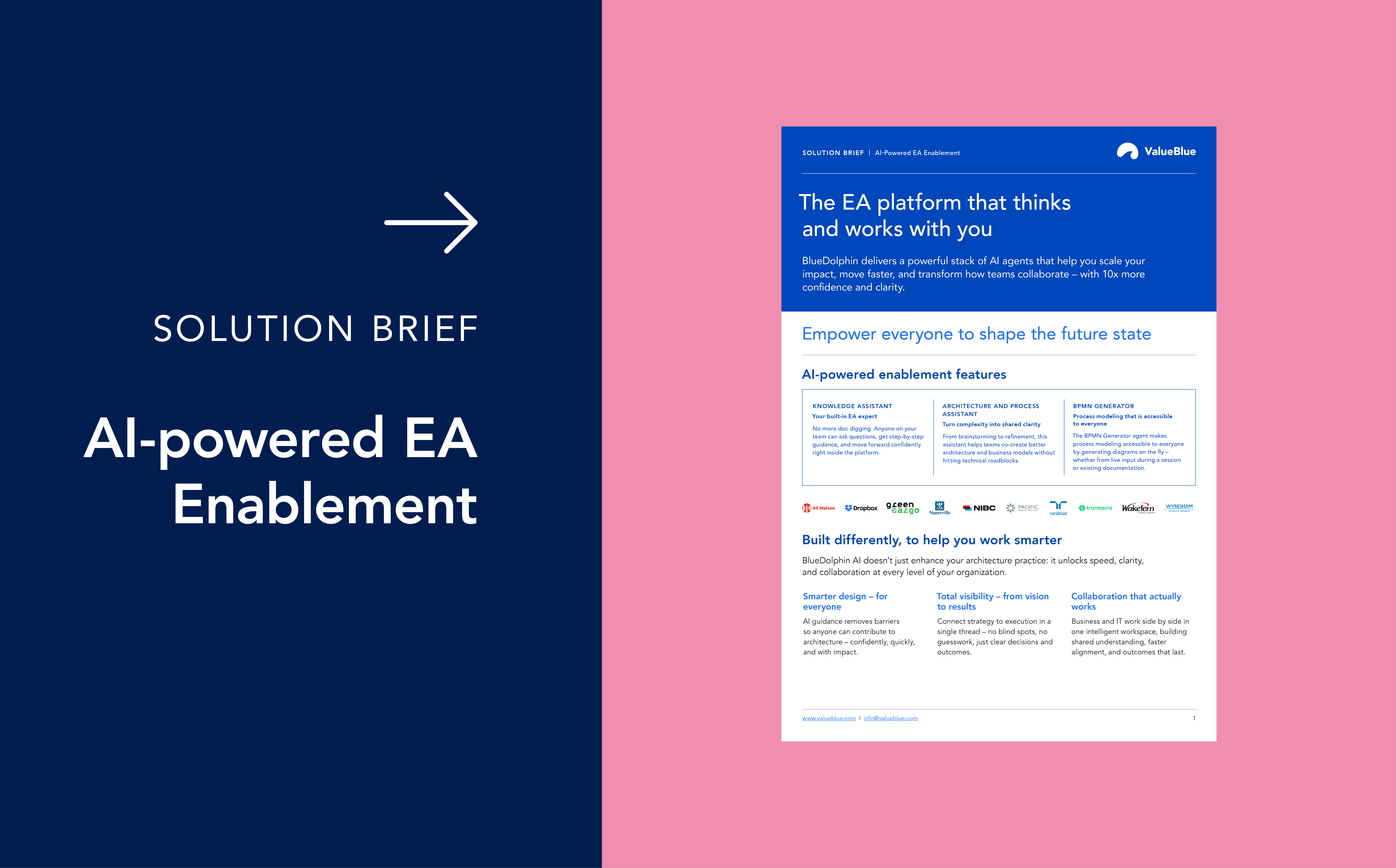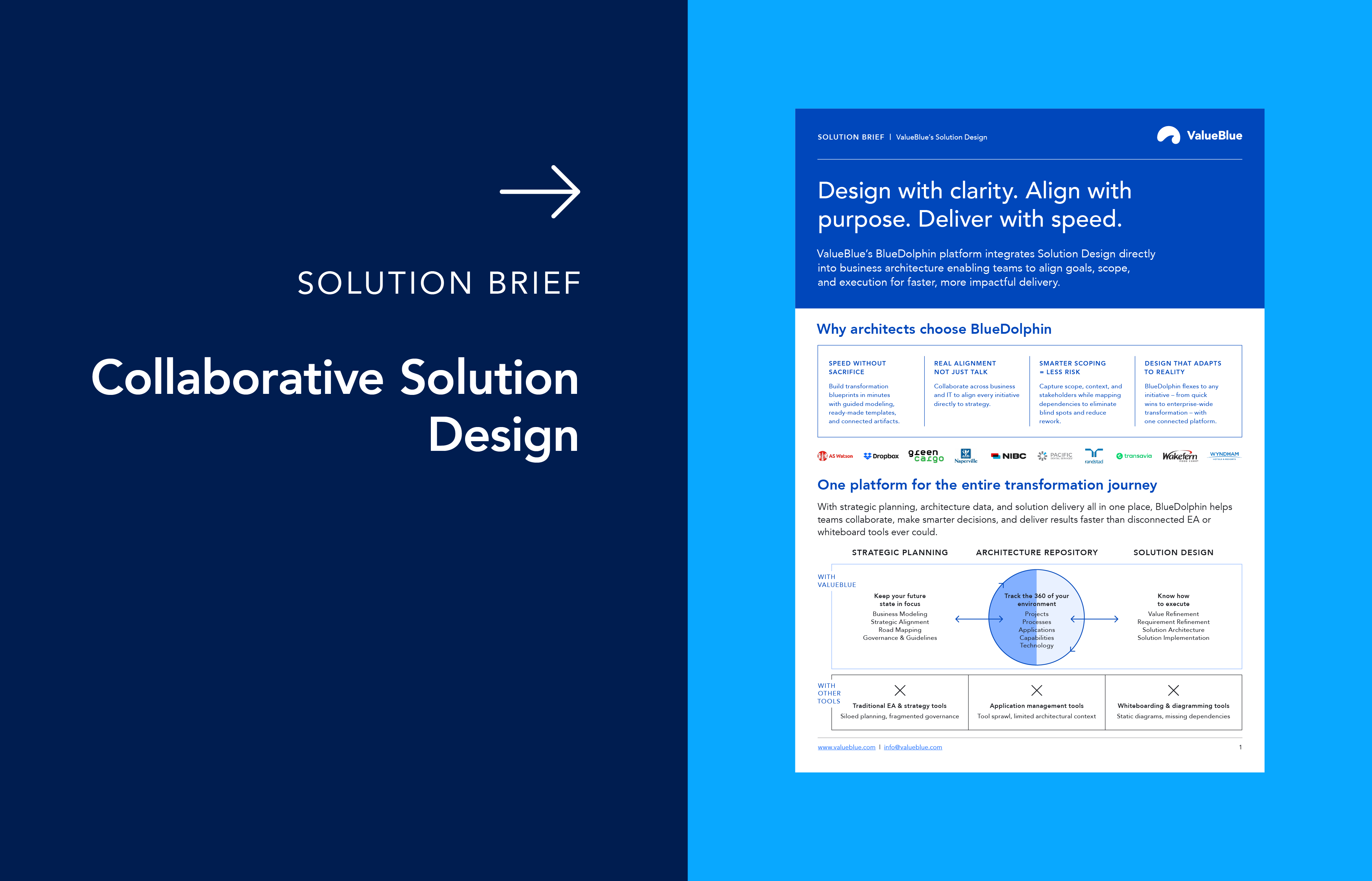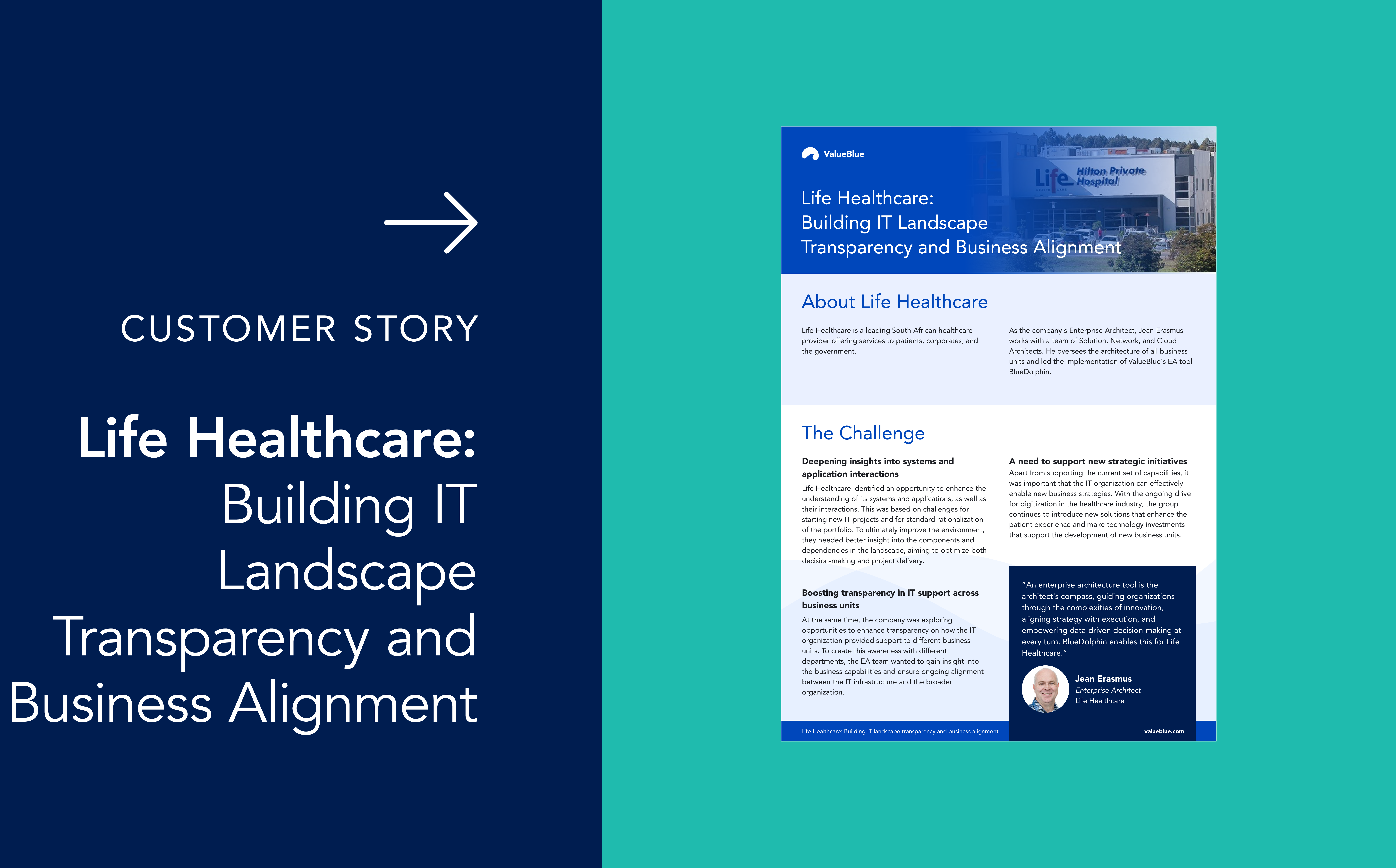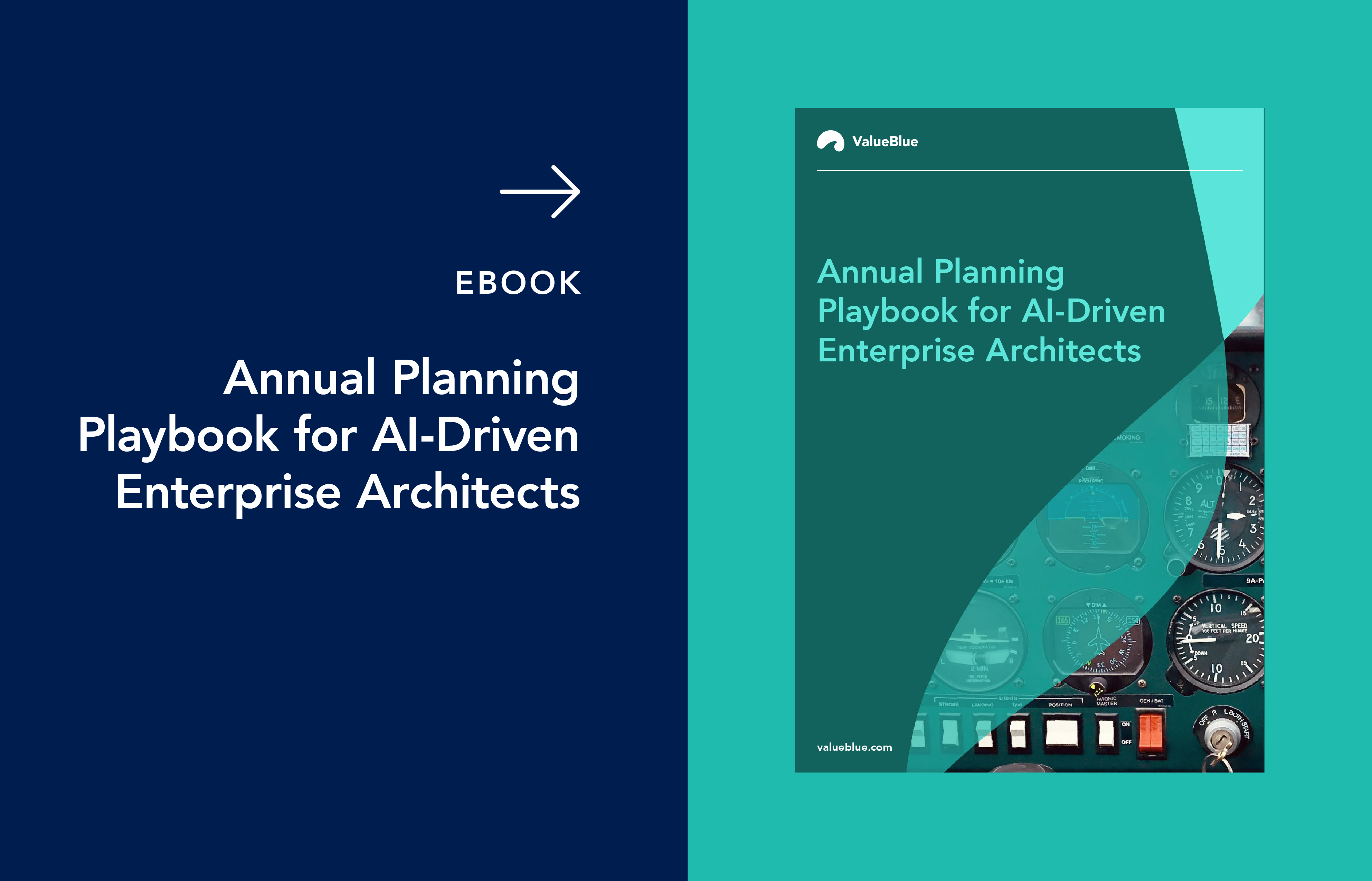Enterprise Architecture for Regulatory Compliance in Pharma
The pharmaceutical industry faces one of the most complex operating environments in the world. Every innovation – whether a new molecule, digital system, or manufacturing method – must meet rigorous standards of safety, transparency, and accountability. Regulations evolve constantly, spanning multiple jurisdictions and governing every stage of the value chain. Amid these pressures, many organizations struggle to balance agility with control.
Behind this challenge lies a deeper structural issue: fragmented data, siloed systems, and inconsistent documentation make it difficult to demonstrate compliance. As new tools and digital processes are introduced, the risk of misalignment grows. According to research from the Ponemon Institute, organizations spend far more recovering from compliance failures than they do maintaining controls. The study found that the cost of non-compliance can be up to 2.6 times higher than the cost of compliance, with average non-compliance expenses reaching $9.4 million compared to $3.5 million for proactive compliance programs.
Enterprise Architecture (EA) provides the discipline and visibility needed to bring order to this complexity. As a strategic enabler of regulatory compliance in pharma, it offers a framework for integrating technology, processes, and compliance into a single, coherent structure – turning regulatory burden into business strength. These EA strategies for regulatory compliance in pharmaceutical industry settings enable a shift from reactive oversight to proactive governance.
Table of contents
- The compliance challenge in modern pharma
- Enterprise Architecture as a governance backbone in pharma
- Strengthening pharmaceutical quality risk management
- Real-world applications of Enterprise Architecture in pharma compliance
- Reducing pharma compliance risk through modernization
- Designing a pharma digital compliance strategy
- Embedding compliance into pharmaceutical business architecture
- Enterprise Architecture as a catalyst for sustainable compliance in pharma
- Key takeaways
- FAQ
The compliance challenge in modern pharma
Regulatory compliance in pharma extends far beyond quality checks or inspections. It touches every part of the enterprise: clinical research, manufacturing, distribution, and post-market surveillance. Each function must adhere to strict pharma regulatory requirements, from Good Manufacturing Practice (GMP) and Good Laboratory Practice (GLP) to data integrity, traceability, and cybersecurity standards.
For many organizations, compliance management remains reactive. Data is dispersed across systems, validation efforts are duplicated, and teams often interpret regulatory requirements differently. This lack of alignment not only increases risk but also limits innovation.
Enterprise Architecture addresses this fragmentation by mapping the entire operational landscape. It connects systems, applications, and business processes, revealing where regulatory controls exist – and where they are missing. This comprehensive view forms the foundation for proactive compliance management, enabling consistency, accuracy, and accountability across all functions.
Enterprise Architecture as a governance backbone in pharma
Modern pharmaceutical companies require more than process discipline; they need structural clarity. Enterprise Architecture pharma strategies provide that clarity by linking business capabilities, data flows, and technology assets to compliance objectives.
Through EA, organizations can establish pharmaceutical enterprise IT governance that ensures every system supports both operational performance and regulatory standards. By modeling applications, workflows, and dependencies, teams gain traceability from policy to execution – an essential capability during audits or system validations.
This architectural foundation allows compliance teams to assess the impact of any change – whether a software update or a process redesign – before implementation. It also reduces redundancy by standardizing how documentation, validation, and risk assessments are captured. When governance is built into the architecture itself, compliance becomes continuous and predictable, not periodic and stressful.
Strengthening pharmaceutical quality risk management
Effective compliance requires more than adherence – it requires foresight. Pharmaceutical quality risk management relies on identifying potential failure points and understanding their downstream impact on quality and safety. EA facilitates this foresight by mapping the interactions between processes, systems, and datasets across the enterprise.
This visibility transforms risk management into a living model. Instead of isolated risk registers or static spreadsheets, organizations gain a dynamic view of interdependencies and vulnerabilities. When a system changes, its connections to manufacturing, laboratory, or supply chain functions are already known. This allows teams to evaluate risk proactively and apply mitigation measures before compliance is compromised.
When EA supports pharma risk management compliance, organizations gain early warning of potential nonconformities and can take corrective action before regulatory findings occur. By integrating EA principles into risk management, pharmaceutical organizations create a resilient foundation for operational excellence. Quality becomes embedded in design, not an afterthought checked at the end of production.
Real-world applications of Enterprise Architecture in pharma compliance
Pharmaceutical organizations are already using Enterprise Architecture to simplify compliance and improve oversight. Global manufacturers are mapping validation systems across multiple facilities to identify redundant controls and shorten audit preparation time. Others apply architectural frameworks to align digital manufacturing records with data integrity and GxP requirements, reducing inspection findings and manual rework.
For instance, research organizations supporting pharmaceutical and biotech clients can leverage an Enterprise Architecture framework to modernize their IT landscape and enhance regulatory compliance. Operating under strict regulatory oversight, organizations of this kind manage extensive volumes of scientific and compliance data throughout the drug development lifecycle. By adopting a structured, architecture-driven approach, they can reduce development timelines through better data integration, automation, and visibility.
Using EA as a foundation, such organizations can map their application portfolio, connect upstream data sources, and create a unified view of research, testing, and compliance systems. The outcome is faster collaboration, improved documentation accuracy for regulatory submissions, and fewer operational bottlenecks. By embedding Enterprise Architecture principles into research and compliance processes, they are able to balance innovation speed with the rigor required in a regulated environment.
According to McKinsey, biopharma organizations modernizing their IT application architectures achieved a 15–30% productivity increase, driven by seamless information flow and advanced analytics across the clinical development process. This reinforces how interconnected, well-governed systems directly enhance both efficiency and compliance readiness.
Applying EA strategies for regulatory compliance in the pharmaceutical industry strengthens both performance and reliability. By providing a shared, end-to-end view of regulated systems, EA enables compliance teams to move from reactive monitoring to continuous assurance, turning oversight into a driver of business efficiency and innovation.
Reducing pharma compliance risk through modernization
Legacy systems remain one of the most persistent barriers to compliance in life sciences. Outdated technologies often lack integration capabilities, audit trails, or security features required under modern regulations. Maintaining these systems contributes to technical debt pharma IT – a hidden liability that increases cost, complexity, and risk over time.
Enterprise Architecture helps organizations quantify and address this technical debt. By cataloguing all applications and evaluating their alignment with business and compliance goals, EA enables structured modernization. Systems that are obsolete or redundant can be safely retired, while critical applications are updated with minimal disruption.
This disciplined approach ensures modernization enhances compliance rather than jeopardizing it. New digital tools – whether for analytics, manufacturing, or supply chain monitoring – are integrated within a validated framework that preserves data integrity and traceability. Over time, this continuous cycle of renewal strengthens both IT resilience and regulatory readiness.
Designing a pharma digital compliance strategy
As digital transformation accelerates, compliance management must evolve from documentation to design. A forward-looking pharma digital compliance strategy integrates regulatory requirements directly into enterprise planning and execution. EA provides the structure for this integration.
Within an architectural model, every business process and system is mapped to its regulatory obligations. This creates an intelligent compliance layer where controls, approvals, and reporting are not manually tracked but systematically embedded. Real-time dashboards highlight where gaps exist, and governance frameworks ensure updates cascade consistently across the enterprise.
This architecture-driven approach eliminates duplication of effort and aligns teams around shared data and objectives. When regulations change, impact analysis becomes immediate. When new technologies are introduced, validation is planned within the broader enterprise context. The result is a compliant, adaptive organization that can innovate confidently without compromising oversight.
Embedding compliance into pharmaceutical Enterprise Architecture
At its highest level of maturity, Enterprise Architecture becomes inseparable from pharmaceutical business architecture. Compliance is no longer managed as a function but as an outcome of well-aligned systems, processes, and governance structures.
By integrating compliance objectives into business capability models, organizations ensure that every investment supports both innovation and control. This connection strengthens accountability across all levels – from R&D and manufacturing to IT and quality.
When supported by EA, pharma risk management compliance becomes a shared responsibility. Executives, architects, and quality leaders all operate from the same source of truth. Metrics, reports, and validation evidence draw from unified data rather than fragmented systems. This not only reduces audit fatigue but also accelerates strategic decision-making, allowing leadership to focus on growth while maintaining unwavering regulatory assurance.
Enterprise Architecture as a catalyst for sustainable compliance in pharma
Sustainable compliance requires more than technology upgrades – it demands cultural and structural alignment. Enterprise Architecture unites these elements by offering a common language for business, IT, and quality teams. It ensures that governance frameworks evolve alongside innovation, not in opposition to it.
With a strong architectural foundation, pharmaceutical companies can automate compliance workflows, standardize documentation, and maintain end-to-end visibility across their operations. This transparency drives continuous improvement, enabling organizations to meet new regulatory expectations without rebuilding processes from the ground up.
Ultimately, EA transforms compliance from a cost of doing business into a competitive differentiator – demonstrating to regulators, partners, and patients that trust is built into every decision the organization makes.
Key takeaways
- Enterprise Architecture provides the structure and visibility required for consistent regulatory compliance in pharma.
- Modeling systems and processes strengthens pharmaceutical quality risk management and accelerates audit readiness.
- Managing technical debt pharma IT ensures modernization efforts support, not disrupt, compliance.
- A proactive pharma digital compliance strategy embeds controls and reporting directly into enterprise workflows.
- Integrating EA into pharmaceutical business architecture enables adaptive, organization-wide governance.
Start today!
Enterprise Architecture transforms compliance from a reactive process into a strategic advantage. By unifying systems, standardizing governance, and embedding regulatory awareness across the enterprise, pharma organizations can reduce risk, increase agility, and innovate responsibly – achieving excellence in both compliance and performance.
Transform your compliance operations into a source of strategic advantage. Book a demo to see how BlueDolphin helps pharmaceutical organizations align IT, quality, and governance to achieve continuous regulatory compliance.
FAQ
1. What is regulatory compliance in pharma?
Regulatory compliance in pharma refers to the systems, controls, and documentation that ensure all pharmaceutical activities – from R&D to manufacturing and distribution – meet legal and quality standards. These requirements include global frameworks such as Good Manufacturing Practice (GMP), Good Laboratory Practice (GLP), and data integrity guidelines that safeguard patient safety and product efficacy.
2. Why is Enterprise Architecture important for pharmaceutical compliance?
Enterprise Architecture pharma strategies bring structure and transparency to highly regulated environments. By linking technology, processes, and data, EA enables organizations to visualize compliance dependencies, reduce redundancy, and respond to evolving regulations with greater speed and accuracy.
3. How do Enterprise Architecture strategies for regulatory compliance in pharmaceutical industry settings improve efficiency?
Enterprise Architecture strategies for regulatory compliance in pharmaceutical industry environments integrate governance directly into enterprise planning. This helps organizations eliminate manual reporting, improve audit readiness, and align digital transformation with compliance frameworks – all while reducing cost and risk.
4. What role does pharmaceutical enterprise IT governance play in regulatory compliance?
Pharmaceutical enterprise IT governance ensures that every system and data source operates under consistent controls. It establishes clear accountability for technology decisions, enabling organizations to maintain validation, integrity, and traceability across the entire application landscape.
5. How does Enterprise Architecture help manage technical debt in pharma IT systems?
Technical debt pharma IT challenges occur when outdated systems and processes accumulate risk over time. EA provides the visibility needed to assess these risks, prioritize modernization, and integrate new technologies without disrupting existing compliance or validation structures.
6. How does Enterprise Architecture support pharmaceutical quality risk management?
Enterprise Architecture maps how data, applications, and business processes interact, giving compliance teams full visibility into potential vulnerabilities. This modeling strengthens pharmaceutical quality risk management by identifying dependencies, ensuring accurate validation, and enabling proactive remediation before nonconformities occur.
7. What is a pharma digital compliance strategy?
A pharma digital compliance strategy embeds regulatory awareness into every phase of Enterprise Architecture and technology planning. It replaces manual oversight with automated controls and real-time monitoring, ensuring that compliance adapts seamlessly as new digital tools and processes are introduced.
8. How does Enterprise Architecture align with pharmaceutical business architecture?
Integrating Enterprise Architecture with pharmaceutical business architecture connects compliance objectives directly to business capabilities. This ensures that every investment – technological or operational – supports both innovation and adherence to global regulatory standards.
9. How can pharma organizations sustain long-term compliance through Enterprise Architecture?
Sustained compliance requires visibility, standardization, and agility. Enterprise Architecture delivers all three by serving as the connective framework between governance, risk, and performance. It transforms compliance from a reactive obligation into a strategic advantage that scales with the enterprise.






